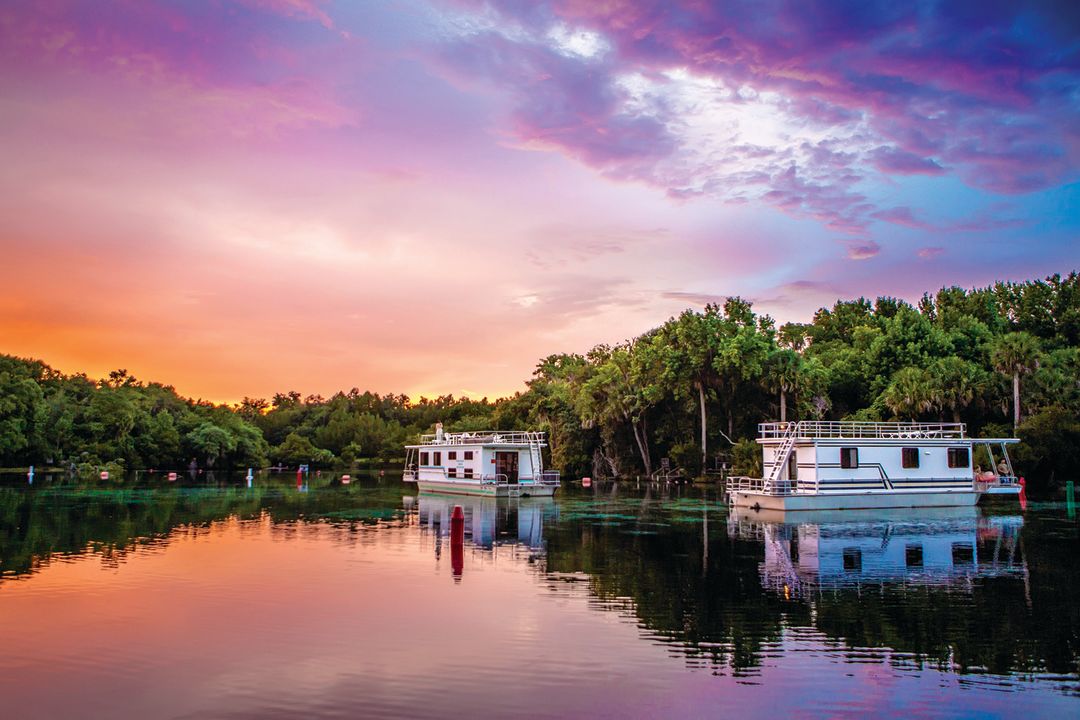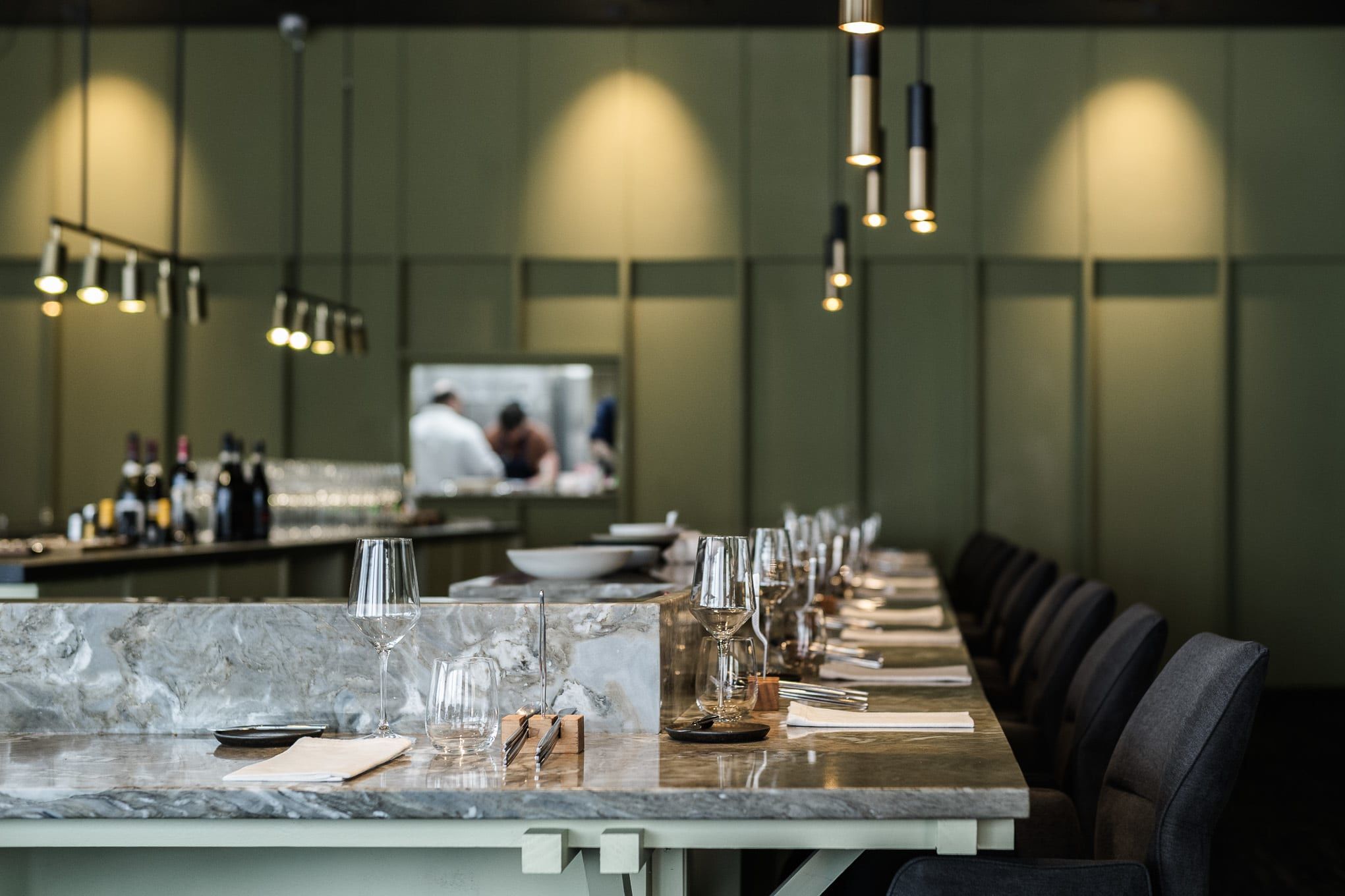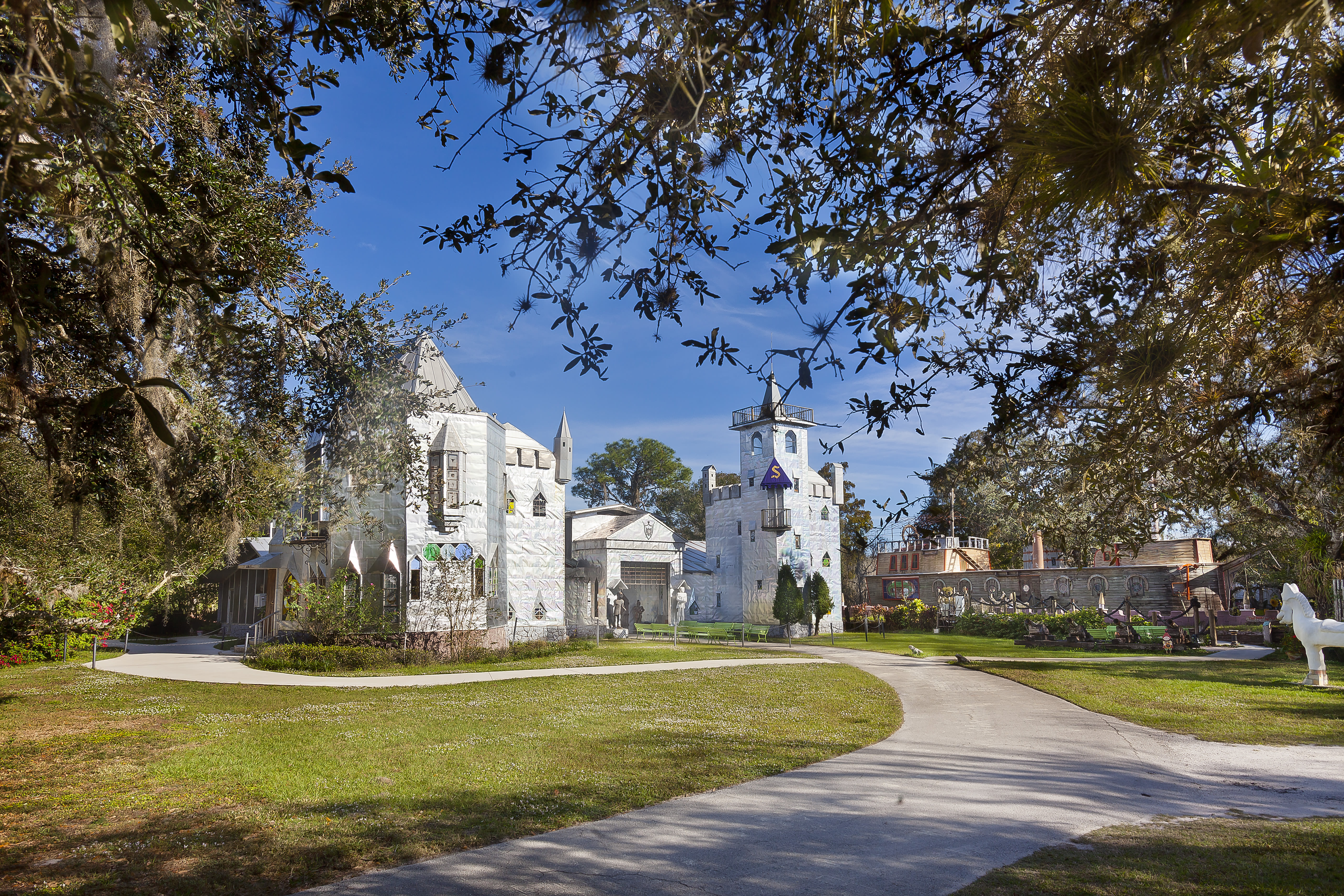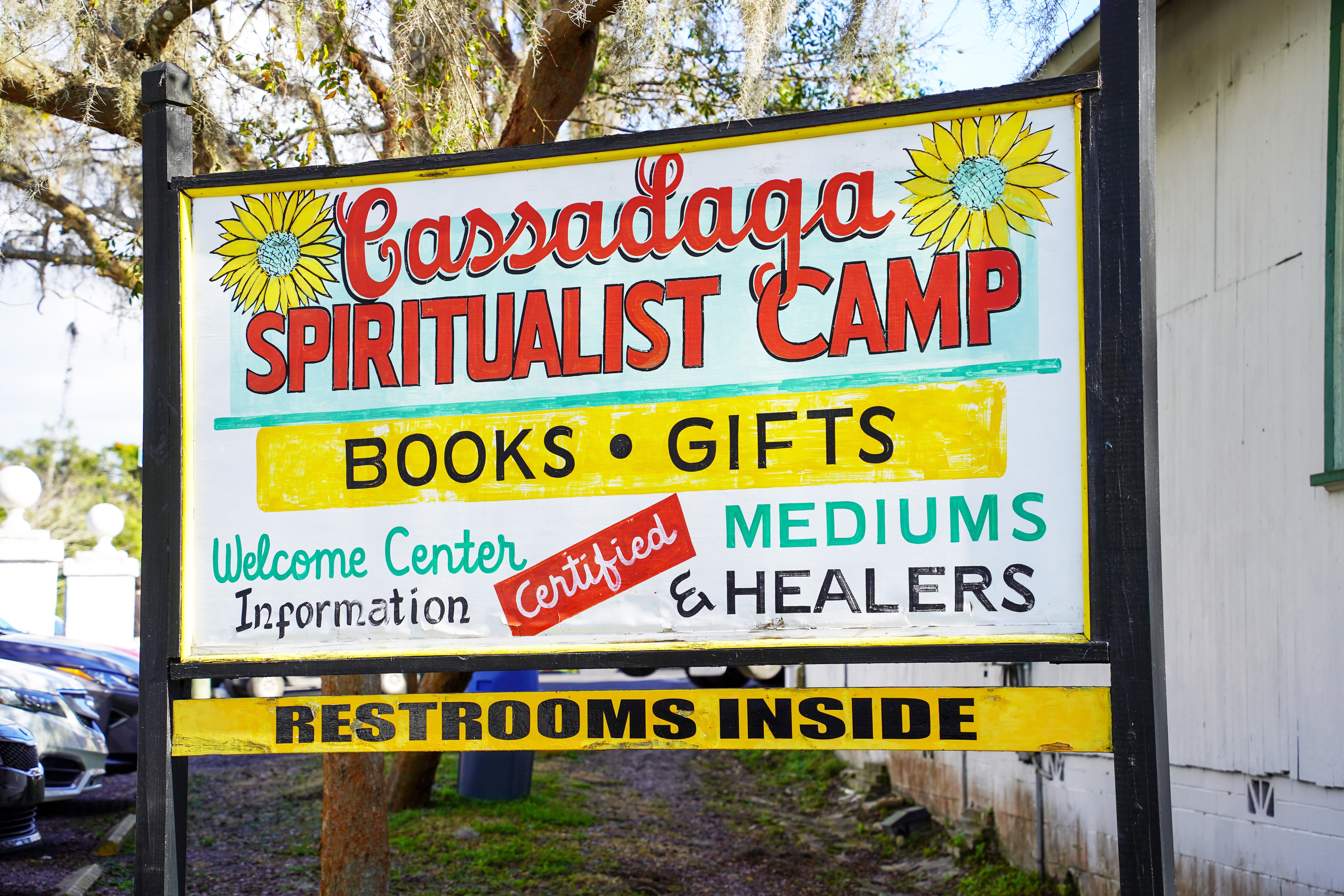Explore the St. Johns River on a Super-Comfortable Houseboat

Sunset paints the St. Johns River setting in colorful hues.
Image: Courtesy Holly Bluff Marina
My daughter loves boating and nature, but she also has a penchant for posh hotels. When we invited her, her husband and their 2-year-old daughter to spend a weekend traveling the St. Johns River on a houseboat, she worried the accommodations would be too rustic for her taste. They arrived at Holly Bluff Marina in Deland before we did and I got a call from the deck of our boat, the 65-foot-long Lady St. Johns. “The boat is magnificent,” she exclaimed. “Magnificent!”
Spacious and immaculate, our houseboat felt as much like a house as a boat. Equipped with everything from a dishwasher, oven and microwave to two flat-screen TVs, it boasted a comfortable living/dining area, two cozy staterooms and two full bathrooms with roomy showers. Best of all were the outside areas—two decks downstairs, fore and aft, and the entire upper deck, much of it under shade, including the wet bar, table and chairs and a flybridge, which allowed us to drive from upstairs as well as inside the cabin.
Yet as much as we embraced the luxury, plunging into primitive Florida made our journey up the St. Johns unforgettable. The river is Florida’s longest and one of the few in the United States to flow north. We traveled only 35 of its 350 miles in our two days, much of them passing through the Ocala National Forest, its emerald-green shores lined with cabbage palms, oaks and cypress trees, or by the occasional little fish camp, where weathered old cabins stood next to modern vacation homes.
We’d been assured you didn’t need navigational experience to drive the houseboat, but when I saw how big it was, I was glad we’d brought my nephew, who’s captained small boats since he was a teen. He aced the 15-minute training course and maneuvered under bridges, through crowds of small boats at the spring we visited and across a 15-mile-wide stretch of Lake George without incident, but some other boaters who left the afternoon we did weren’t so fortunate. One—a boisterous group on a bachelor-party weekend—ran up on the shore and had to be towed back to the marina; another destroyed two props in shallow water.
In 1774, explorer and author Charles Bartram spent months navigating the river, and the scenes he recorded—floating islands of water lettuce, alligators basking on the shore, crystalline springs and hundreds of species of birds, from kingfishers to bald eagles—all unfolded before our eyes. True, my nephew, who slept on the top deck the first night, didn’t have a wolf creep aboard and steal a stringer of fish next to his head, as Bartram did. But after he scrambled up an oak tree to tie our houseboat to some branches, we dined under a full golden moon and admired an infinity of bright stars, just as Bartram and his companions had.
On our second day, we got up at sunrise and by 9 a.m. had arrived at the Silver Glen Springs, said to be Florida’s clearest freshwater spring. In the summer, it can be crowded with visitors, but for several hours on this December morning, it was only us and an infinity of cormorants, anhingas, herons and other birds perched in the leafy trees that edge the springs. We dove into the cool waters, marveling at their light-laced turquoise depths, and took to the paddleboards, venturing down a narrow creek and spotting turtles and an otter. By noon, other boats had arrived. Everyone waved and smiled, and a young woman in a bright-red bikini kayaked over to ask if she could charge her phone in our cabin.
We left in late afternoon, and at sunset again tied up to a tree, then barbecued steaks and sat outside for hours. We never thought about turning on the TVs; hooting owls and splashing fish were the only soundtrack we needed. When we pulled back into the marina at noon the next day, I thought about Marjorie Kinnan Rawlings’ Cross Creek, which chronicles her life in a rural Florida town during the 1930s. She wrote that a Cracker friend persuaded her to venture down the St. Johns on a small wooden boat.
“The river life is the finest kind of life,” he declared. “You couldn’t get you no better life than the river.”
Holly Bluff Marina has a fleet of well-maintained houseboats and a service-oriented staff; rates for a weekend start at around $1,800.
Insider Info
From Shannon Blankenship, outreach director, St. Johns Riverkeeper
“The St. Johns is one of the laziest rivers in the world. Called ‘The River of Lakes,’ it creeps through wide expanses—'the lakes'—and narrow passages that connect them. It’s both salty and fresh, fed by freshwater and saltwater springs bubbling below the surface.”
“It’s a wonderful river to explore by boat, because there are so many ecosystems—rivers, lakes, creeks and springs—all connected.”
“Florida’s springs are one of the wonders of the world. When you swim in them, you’re swimming in the Florida aquifer, that enormous reservoir of fresh water under the earth.”
“Hike the 9.6-mile St. Francis Trail to see what’s called Ghost Towns, where a few relics remain of towns that thrived during the steamboat era. At Hontoon Island State Park, you’ll see replicas of three totem poles that were found preserved in river muck—the only ancient totem poles discovered outside the Pacific Northwest. And the Blackwater Inn in Astor is a great place to enjoy seafood while you look out over the river. Take the inn’s cruise down beautiful, shaded Blue Creek.”



